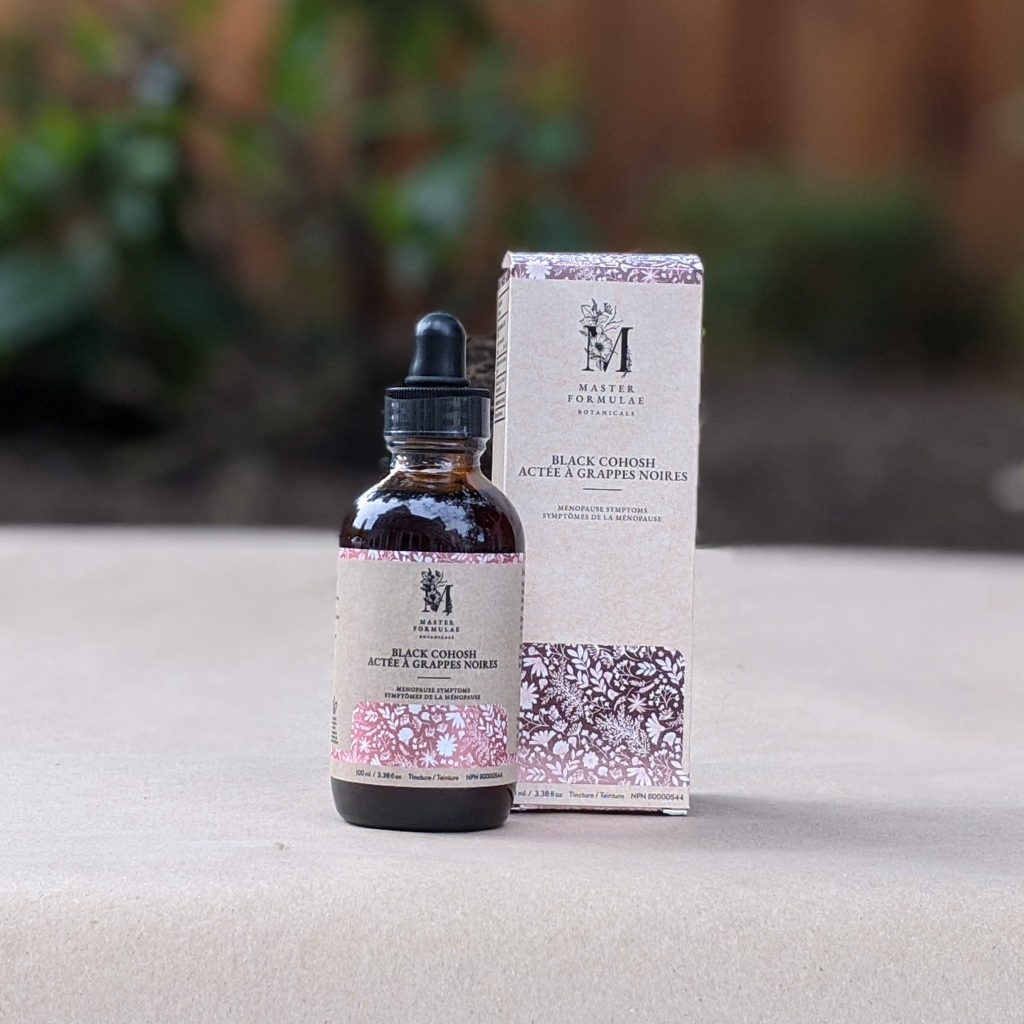Black Cohosh Herbal Medicine
History
Historically black cohosh was a popular herb among Native Indigenous people of North America. It was used to treat pain, fever, cough, pneumonia, to bring on labour and to regulate the menstrual cycle. Historical names for it included as baneberry, black snakeroot, bug root, and bugbane. It got its name bugbane and bug root was for its use as an insect repellant.
Current Use
Menopause symptoms
Black Cohosh is most commonly known to relieve menopause symptoms such as hot flashes, mood, dryness and low libido. As menopause approaches, estrogen levels start to decline. Menopause symptoms occur as a result of lowered estrogen. In menopausal women, black cohosh can help to increase bone density, which starts to decline when estrogen declines.
Menstrual Cycle
Since black cohosh has such significant effects on menopausal women, with declining estrogen levels, it is theorized that black cohosh must work by stimulating estrogen. Because of its theorized effects on estrogen, it can also support the menstrual cycle by improving painful cramps, PMS and menstrual headaches or migraines.
Pain and Anxiety
Some perhaps surprising uses for Black Cohosh include its use to relieve pain, tension and to promote relaxation. Some other known uses are: to improve mood, relieve arthritis and rheumatoid conditions, support a healthy immune system, relieve anxiety and relax muscles and nerves.
Hormone Replacement Therapy: A safer alternative
Current women’s health research shows that hormone replacement therapy is associated with many health risks including breast cancer risk, cardiovascular disease, stroke, dependence and more. These risks have sparked a new interest in seeking out alternative therapies in not only the natural health industry but also traditional western medicine. This has prompted further interest in Black Cohosh for women’s hormone health.
Mechanism of Action
Speculation and scientific shortcomings
Studies to determine if black cohosh herbal medicine has estrogenic activity have yielded conflicting results. The exact mechanism of action of black cohosh is currently not known. Initially, it was thought that black cohosh works by stimulating estrogen production. However, some studies claimed this was false. Out of curiosity we sought out some of these studies and found there were some major flaws in their studies.
One study gave black cohosh to mice whose ovaries had been removed to see if it would increase levels of estrogen in the mice. As you can expect the mice’s levels of estrogen were 0. The study then concluded that black cohosh does not increase levels of estrogen. The problem here is that they removed the part of the animals’ body’s that makes estrogen. Without this critical organ, it would be hard for black cohosh to increase the production of estrogen by the ovaries. They did suggest that black cohosh did still show a positive effect on a number of health complaints. Although it didn’t seem to work by increasing estrogen, they believe it does work on dopamine, noradrenaline, serotonin and Gaba pathways.
New and exciting research
New research suggests that Black Cohosh may work in several different ways:
- as a selective estrogen receptor modulator
- through serotonergic pathways
- as an antioxidant
- on inflammatory pathways
By alleviating menopausal symptoms initial understandings suggested that black cohosh worked on estrogen receptors. However, there are other mechanisms of action that can relive menopause symptoms including the serotonin pathways. In fact, SSRI’s have been shown to reduce menopause symptoms such as hot flashes, mood swings, anxiety and insomnia. Because serotonin works on the Central Nervous System (CNS) it has the ability to relieve these symptoms. Serotonin notably regulates body temperature, which would explain its ability to control hot flashes. Whereas mood and sleep are also regulated by the CNS and serotonin pathways as well as estrogen.
Serotonin and Estrogen share many effects on the body and have a close relationship. For example, many migraine sufferers experience menstrual migraines during times in their cycles where estrogen drops, which also leads to a drop in serotonin, thereby causing a migraine. It also seems that estrogen has the ability to increase serotonin and the number of serotonin receptors in the brain. This is why when estrogen levels are the highest, during ovulation, women feel the happiest. The relationship may be reciprocal as one study supported the ability of serotonin to increase estrogen.
What does it all mean?
It remains uncertain if Black Cohosh has estrogenic effects but research remains quite positive of its serotonergic effects. Despite any uncertainty on its estrogenic effects, support that it can relieve menopause symptoms, promote fertility, regulate the menstrual cycle, improve mood, reduce cramps, relieve pain and promote relaxation is strong.
Master Formulae Botanicals Black Cohosh
Our black cohosh herbal medicine is a high quality, professional-grade tincture. All products are third-party tested for heavy metals, pesticides, moulds and other nasties to ensure the cleanest product possible. Tinctures are more bioavailable and fast-acting so you get an effective medicine when you need it most.
Resources
https://www.ncbi.nlm.nih.gov/pmc/articles/PMC3046019/
https://www.ncbi.nlm.nih.gov/books/NBK470187/
https://selfhacked.com/blog/black-cohosh/
https://link.springer.com/article/10.1186/s40816-015-0013-0
https://www.ncbi.nlm.nih.gov/pmc/articles/PMC1327664/
https://pubs.acs.org/doi/full/10.1021/jf803298z?src=recsys&
https://en.wikipedia.org/wiki/N-Methylserotonin

